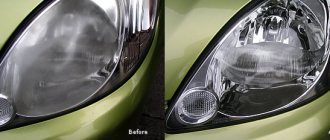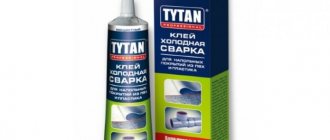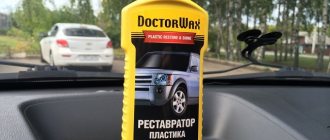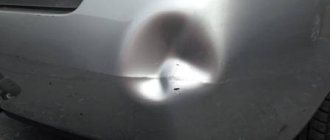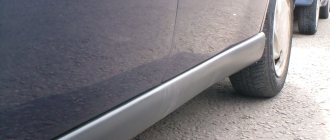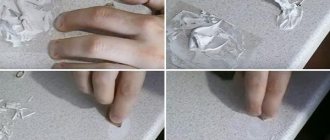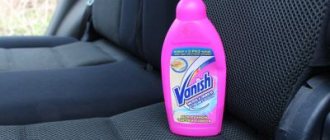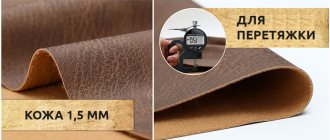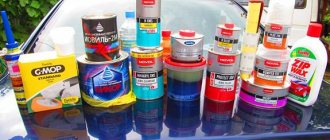The interior of your car is one of the main points in the matter of aesthetics of the entire car. Each car has its own brand, its own interior design.
One of the most popular materials used for interior design is plastic. But wooden and chrome parts are often found. Luxury car brands use a lot of genuine leather. And all this requires care.
Proper care of plastic in the cabin
Plastic is negatively affected not only by ultraviolet rays, but also by cigarette smoke. Due to their influence, it becomes duller, light details begin to turn yellow. Therefore, try not to leave your car in the sun for a long time. Hide him in the shade.
If you smoke in the cabin, then clean the interior with cleaning products more often.
Everyday care of plastic in the salon consists of daily wiping, first with a damp cloth, then dry, so that no streaks remain.
To carry out general cleaning, you can use the most convenient and easiest method today - this is a polishing aerosol in a can, the volume of which is 300 - 500 milliliters. Aerosols not only renew the appearance of plastic, but also protect the surface from dust.
There is nothing complicated in application. Simply apply the aerosol to the surface and rub with a dry soft cloth.
Review of car cosmetics. All the Pros and Cons
Before you go to the store for professional products or turn to the methods of folk craftsmen, you must first determine the degree of damage to the plastic. It comes in three levels:
Minor damage looks like a thin cobweb on the surface of the plastic. They appear due to inaccurate contact of the surface with non-sharp objects. For example, from being hit by a bag, zipper on clothes, unsuccessful loading of things.
Light spots appear due to exposure to sunlight. Burning out from ultraviolet radiation, lightened areas appear on the surface of the plastic. Usually, such damage is dealt with with masking felt-tip pens (markers) - fabric dyes. By choosing the right color, the driver can easily deal with stains on the hood or bumper of the car.
Deep cuts occur as a result of special or accidental impact on the plastic with sharp objects. These are the most unpleasant injuries, which are simply impossible to deal with using conventional methods. To combat deep cuts, there are more global methods than polishing or burning. More on that below, but for now let’s talk about how to deal with small spider-like scratches.
Each of these types of damage must be dealt with in a different way. Each of them is based on knowledge of the properties of the plastic installed in the car and the physical and chemical characteristics of the materials used.
Polishing with abrasive material
The most professional way to tidy up the surface is by polishing with an abrasive material. According to the testimony of car enthusiasts themselves, the method is effective and often appropriate, but not always effective. First you need to thoroughly clean the surface, degrease it, dry it and cool it. Apply polishing material. Then treat the damaged area manually or use a grinder at the lowest speed. During processing, any dust that appears should be constantly removed.
The advantage of the method is its technology. The disadvantages include the inability to completely remove a scratch. Or rather, it simply cannot be removed. With the help of professional polishes it can be masked and leveled with the entire surface.
This method is not used on all vehicle surfaces. Outside, you need to act very carefully so as not to get another web of scratches. Mostly, surfaces in the interior are sanded, for example, the dashboard area, dashboard, interior plastic.
Masking scratches
Small scratches on the plastic of a car can be skillfully disguised. In theory, this is the same polishing, only with the help of other available means. For camouflage the following are used:
special marker - a pencil is selected to match the interior color, then the surface is cleaned and dried. A layer of filler is applied with a marker, after which the surface must be polished to smooth out unevenness;
wax – purchase a special car wax for car polish (can be replaced with GOI paste or machine oil). The product is applied to a clean, dry surface, then rubbed into the damaged area in a circular motion;
glass cleaner - applied to a clean, dry surface, rubbed in with a dry soft cloth;
a glass polish with abrasive components can not only mask, but also completely remove small scratches;
Hydrofluoric acid is used only for plastic and glass surfaces. If there are components from other materials, acid should not be used under any circumstances;
Polish for copper and silver is applied to the damaged areas and rubbed in with a microfiber cloth until the cobwebs from the scratches completely visually disappear.
All products have been verified by car owners. They warn to be especially careful with glass cleaners and polishes, as well as hydrofluoric acid. If you have other means at hand, then it is better to avoid using these.
Heating with a hairdryer
Regarding this method, there are so many people, so many opinions. Let's be objective and consider all the pros and cons of this method.
The idea is to heat the damaged plastic surface with a hairdryer (industrial or household). Before heating, the area should be thoroughly washed and dried. While the hair dryer is running, the plastic will begin to melt, so you don’t need to touch it with your hands to avoid leaving dents. The theory is that the plastic will melt a little and level the surface.
You need to start with minimal power and distribute the heat gradually over the entire area of the damaged area. It is recommended to first evaluate the reaction of the plastic to heat so that when treating scratches it does not float. If the scratch does not disappear, it is recommended to use polishing.
According to some car owners, this method is not only ineffective, but also extremely stupid. When plastic melts, no one can even predict what shape it will take after cooling. In addition, this method, in principle, is not applicable to relief surfaces. Their structure and pattern will be disrupted, and this result is unlikely to be pleasing to the eye.
Using a lighter
If you don’t have a hairdryer at hand, you can try to get rid of minor scratches using the open flame of a lighter. This is a rough method in which you need to be extremely careful and careful. Removing scratches from car plastic using a lighter requires some prep work. First you need to practice on another piece of plastic to get the hang of it and determine the heating time. After treating the surface with an open fire, you need to wipe it with an alcohol wipe. This should be done when the area has cooled down. If the scratch does not heal, then it is not recommended to burn the area again. It's better to use other methods.
Other methods and means
Scratches on the plastic of the car can be removed using other available means. These include:
computer equipment cleaning products that work well with microfiber and can help combat minor damage;
polish for wooden furniture. It needs to be mixed with Vaseline and rub the composition until the Vaseline is absorbed;
dye to disguise damage. Apply using a toothpick or small brush. The paint is matched to the color of the surface, after drying the area is polished using machine oil;
masking markers or fabric paint. This is an expensive but effective way to disguise scratches. After applying the dye, the surface must be polished.
If none of the methods gives results, then you can repair the plastic. It is carried out only with a smooth surface, since it is impossible to restore a corrugated one. No handheld device will be able to give the corrugated surface its original shape. Unfortunately, such damage can only be corrected by completely replacing the coating. It's expensive, but effective. Let's get back to repairing smooth plastic surfaces.
Repair work is carried out in stages:
the surface is sanded using a grinding machine or manually using the finest grain sandpaper;
the sanded area is primed from a spray can (you need to select a primer that will not react with the plastic), the procedure is carried out in two layers (the second is applied after the first has dried);
treat the surface with an abrasive until smooth.
If the scratches are deep, then you need to add putty and paint the area. You can complete the repair by covering the surface with varnish. You need to be extremely careful when choosing a dye. Even a small error in shades can lead to all the work being done in vain. The repaired area will stand out from the overall surface area.
Polishing process
Polishing the plastic of the car interior is necessary to remove any defects that have arisen. Most often these are scratches and yellowing. We can remove all this with our own hands, since there is nothing complicated in this procedure.
Polishing steps:
- Sand the scratch with medium-grain abrasive sandpaper (this can be omitted if there are no scratches). Wipe the surface.
- Next, we carry out the processing with sandpaper and fine abrasive. It will remove traces of previous processing. Wipe the treated surface.
- We finish polishing with felt or pastes without abrasive content.
Polishing should only be done using water. Constantly wet the abrasive sandpaper and treat it with water. Some people perform this process under a constant stream of water. This is simpler, but when working with fine-grained skins, the abrasive may not reach the surface being treated due to a constant water layer.
You can select the abrasive number from the amount of damage:
- P – 400, P – 600 for scratches more than 0.2 millimeters.
- P1000 – P1500 for numerous small scratches, to remove yellowness.
- P – 2000 as well as non-abrasive pastes are used for final polishing
Tools and materials
In order to speed up the polishing process, you can use either a special polishing machine or a simple electric drill with a special attachment for attaching wheels.
There are various pastes available as polishes. But if you have any doubts, you can confidently purchase a set of GOI pastes along with a wax polish. By choosing the correct number of GOI paste, you can eliminate any scratch. We apply it to felt or felt fabric.
It is important to control the work with the power tool, preventing the plastic from overheating. After which it may simply melt. Therefore, do not put much force on the tool, as repairing this damage will be problematic.
But we will also consider the option of removing scratches using heat.
Sanding plastic
This method of mechanical treatment of a plastic surface is used if there are deep scratches that cannot be effectively removed by any other method. The material lends itself well to grinding and has a low melting point. As a result of leisurely, careful work, we should get a uniform matte surface where there were previously deep scratches. Here is the subsequent range of actions:
- We place the pre-cleaned material where it will be convenient to work with it;
- prepare the workplace, remove all unnecessary items;
- as a processing material we take several waterproof skins of different textures;
- a special grinding machine is useful as an auxiliary tool;
- If you don’t have a machine, you should keep in mind that sanding using soapy water has a good effect.
We begin the work using sandpaper that has a coarse texture. Sanding is a slow process and requires care. We process the product in a slow mode, monitor the temperature, it should not overheat. We methodically move from the coarse texture of the skins to smaller ones. After using each of them, we wipe the treated area with a dry cloth, this allows us not to miss any remaining imperfections.
Polishing plastic with a hairdryer
On some car parts, polishing with a machine is not very convenient, and removing the part can be quite problematic. In this case, you can try polishing using a hair dryer, after preheating the part. But if there is paint on the surface being treated, we advise you to abandon this method.
When the hair dryer heats up the damaged area, the plastic begins to melt little by little and thereby heals the scratch. It is not easy to control the process, but it is possible if you are an attentive person. The main thing is not to overdo it and not let the plastic float.
To do this, it is necessary to work with small areas, gradually increasing the temperature and constantly monitoring the process.
Scratches, especially if they are serious, cannot be eliminated completely. And after working with a hairdryer, you will need to finish everything to excellent condition with polishes.
Special or wax polishes are rubbed into the treated area with microfiber or a clean, soft, lint-free cloth.
The video shows how you can remove scratches on plastic using a hair dryer.
Polishing with a hair dryer
Plastic parts are exposed to high temperatures. High temperatures may cause deformation. But to make polishing plastic from scratches as effective as possible, temperatures can help. So, if you preheat the part with a hair dryer, this will greatly simplify the work. It is worth remembering that heating with a hairdryer will not have the best effect on the paintwork. Therefore, if the plastic is painted, this method is not suitable.
Polishing wooden elements
On the wooden elements of your interior, only the varnish coating is treated. If the scratches are quite deep and reach the wood, you will have to replace the entire varnish layer. Otherwise, furniture polishes are used.
It is better to pre-treat the scratch with paraffin or wax, since the wax contained in furniture polishes is sometimes not enough.
It is better to polish a wooden surface with your own hands. If you accidentally damage a layer of wood, it is almost impossible to restore it. Therefore, do everything slowly and with special attention.
